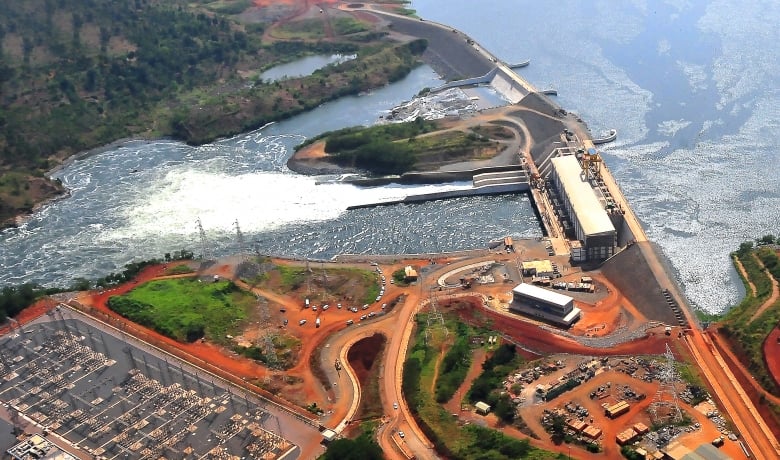Prime
Stricken Isimba dam sparks Umeme power outage alert

The Speaker of Parliament, Ms Anita Among, addresses Ministry of Energy officials and stakeholders of the West Nile power sector at Parliament on August 9, 2022. PHOTO | DAVID LUBOWA
The premonition of defective works that marred the construction of the 183.2megawatts Isimba hydro-power dam came to pass on Monday after the plant was shut down following flooding of the power house that houses generators and turbines.
By press time last evening, the Ministry of Energy technocrats were still waiting for a comprehensive technical report from the Uganda Electricity Generation Company (UEGCL) engineers about cause of the technical glitch, three years after the dam was commissioned as one of the ruling NRM party’s highlight during President Museveni’s fifth term.
UEGCL, supervised by the ministry, oversees electricity generation in the country.
In a brief statement the company said the power house ingressed water during a planned maintenance outage “necessitating an emergency shutdown as a safety precaution”.
Barely half of the 183megawatts generated by the dam, one of President Museveni’s pet projects, is consumed by the country due, to among others, the low absorption capacity of the transmission and distribution lines. The dam, at the parallels of Kayunga and Kamuli districts, cost $568m (Shs2.1trillion), 80 percent a loan from China’s EXIM Bank.
However, the monopoly distribution service provider, Umeme, yesterday warned the public around the greater Kampala Metropolitan area, and parts of the Eastern and Western Uganda, to brace for power blackouts for up to eight days.
The Umeme head of communications, Mr Peter Kaujju asked the public to be calm as the problem is rectified.
“Since Monday, we were notified by UETCL about a challenge at Isimba prompting emergency load shedding in some areas. They have updated us that the teams are working to restore normal functionality. Some customers may be affected but the teams are working to ensure power supply from other sources,” Mr Kaujju noted.
Uganda currently has an installed electricity generation capacity of 1,182.2 megawatts largely from hydropower dams. Of these, 813 megawatts is from large hydropower dams including Isimba, Bujjagali with a plant capacity of 250 megawatts, and Nalubaale and Kiira dams with a combined capacity of 380 megawatts.
An additional 119.45 megawatts is generated by mini hydro dams on various rivers around the country. Another 101 megawatts is generated from thermal plants, whose cost is six times higher than the hydro power.
Despite the large generation capacity average peak demand for electricity stands at 630 megawatts leaving 552 megawatts unconsumed.
Dr Patricia Litho, the Ministry of Energy’s head of communications, in a statement yesterday said the water ingression into the power house has since been contained.
“The power station had to be shutdown to ensure that the water rise in the powerhouse is limited. What is at stake is the damage of electromechanical equipment within the powerhouse,” she said.
“We shall keep you informed as work progresses.”
The technical glitch yet again raises concerns about the structural integrity of the dam following earlier back and forth reports of slapdash civil works, including cracks, which were blamed on among others the poor quality of sand used.
Similar reports were raised on the 600megawatts Karuma hydropower dam, whose construction has been ongoing for the past 10 years and completion date timelines have slipped several times. The Auditor General John Muwanga’s report submitted to parliament early this year detailed that the dam has suffered a delay of three years and six months from the initial planned completion date due to unfinished works such as the spillway rehabilitation and other minor defects.
Sources familiar with the Isimba debacle told Daily Monitor there is already a blame game between the contractors and UEGCL with the latter accusing the contractors for doing shoddy work and the former accusing UEGCL for causing the anomaly during the maintenance run.
Sources added that if the water ingression continues, the government will incur extra costs of repairing the machines which are costly.
“The government pays back this loan on a monthly basis so if the outage takes long, there might be delays because the money the government pays from the money it receives from power sold,” another source hinted.
The Energy minister, Ms Ruth Nankabirwa, revealed last year in September that they had directed the Isimba dam contractor, China International Water and Electric Corporation, to rectify all the 584 defects detected at the plant before handing it over to the government.
Ms Nankabirwa said the plant should only be handed over to government when it is 100 percent devoid of defects so that the contractor does not ask for more time extension to complete them and cause audit queries.
Mr Michael Elimu Esimu, the power generation manager at Isimba power station, said later that since March 2019 when the plant was commissioned, the 584 defects had been identified, with the potential to stall the smooth operation of the plant. An assertion that they had experienced four major incidents, which almost caused the shutdown of the plant.




